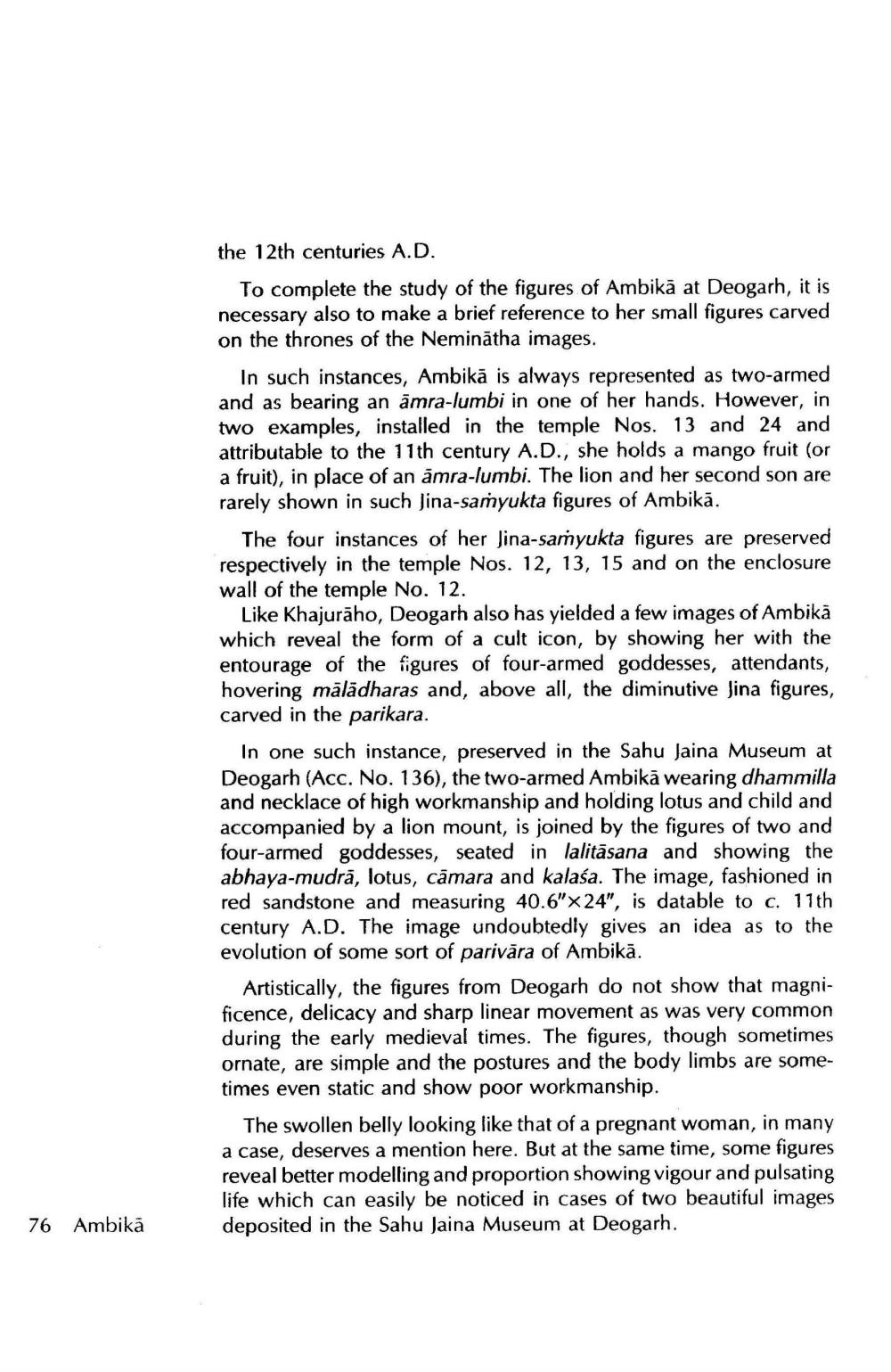________________
the 12th centuries A.D
To complete the study of the figures of Ambikā at Deogarh, it is necessary also to make a brief reference to her small figures carved on the thrones of the Neminātha images.
In such instances, Ambikā is always represented as two-armed and as bearing an amra-lumbi in one of her hands. However, in two examples, installed in the temple Nos. 13 and 24 and attributable to the 11th century A.D., she holds a mango fruit (or a fruit), in place of an āmra-lumbi. The lion and her second son are rarely shown in such Jina-samyukta figures of Ambikā.
The four instances of her Jina-samyukta figures are preserved respectively in the temple Nos. 12, 13, 15 and on the enclosure wall of the temple No. 12.
Like Khajurāho, Deogarh also has yielded a few images of Ambika which reveal the form of a cult icon, by showing her with the entourage of the figures of four-armed goddesses, attendants, hovering mālādharas and, above all, the diminutive Jina figures, carved in the parikara.
In one such instance, preserved in the Sahu Jaina Museum at Deogarh (Acc. No. 136), the two-armed Ambika wearing dhammilla and necklace of high workmanship and holding lotus and child and accompanied by a lion mount, is joined by the figures of two and four-armed goddesses, seated in lalitāsana and showing the abhaya-mudrā, lotus, camara and kalasa. The image, fashioned in red sandstone and measuring 40.6"x 24", is datable to c. 11th century A.D. The image undoubtedly gives an idea as to the evolution of some sort of parivāra of Ambikā.
Artistically, the figures from Deogarh do not show that magnificence, delicacy and sharp linear movement as was very common during the early medieval times. The figures, though sometimes ornate, are simple and the postures and the body limbs are sometimes even static and show poor workmanship.
The swollen belly looking like that of a pregnant woman, in many a case, deserves a mention here. But at the same time, some figures reveal better modelling and proportion showing vigour and pulsating life which can easily be noticed in cases of two beautiful images deposited in the Sahu Jaina Museum at Deogarh.
76 Ambikā




